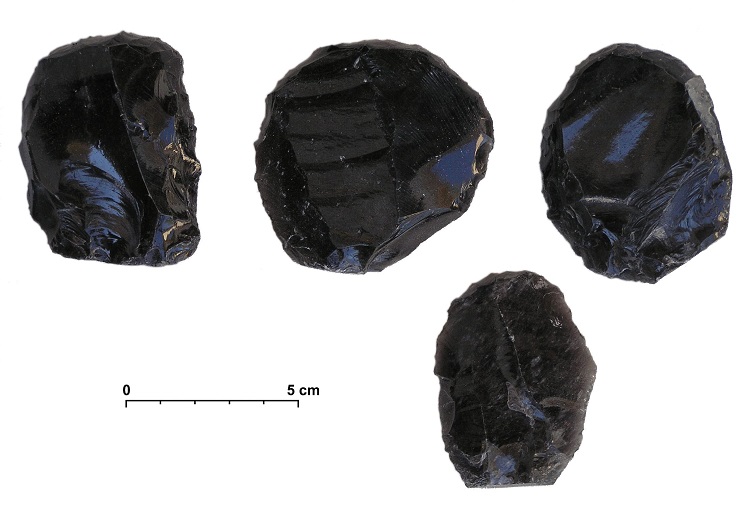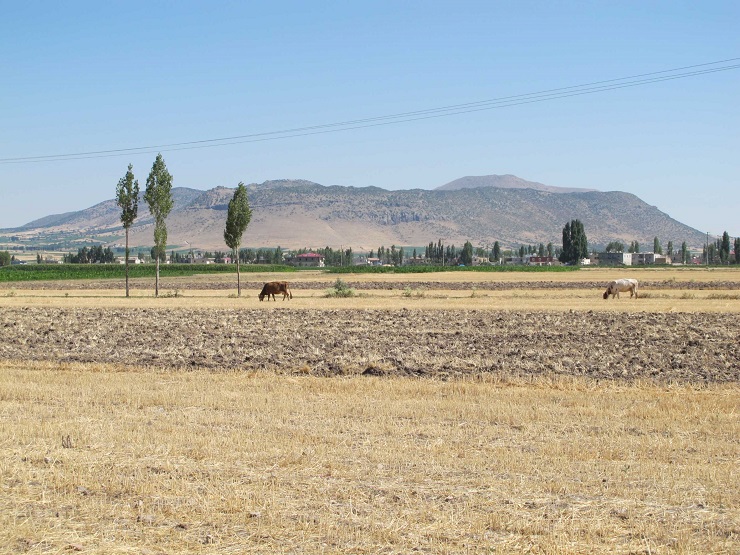For many years obsidian (volcanic glass) has been a source of many questions related to the study of the Near East Neolithic Period. In Anatolia it is possible to discover the richest sources of obsidian in the entire Middle East, the use of which reached its apex specifically during the Neolithic period.
|
|
| The earliest Neolithic sites in Central Turkey are characterised by their dense settlements of adobe bricks buildings. One of the most famous sites located in Central Turkey is Aşıklı Höyük (PPNB), where the lower parts of the houses are particularly well preserved. Their interior areas were equipped with heating devices (as can be seen in the picture below), around which frequently there are also stone-grinding tools. Research by the Department of Prehistory of Istanbul University. Photo by Jaroslav Řídký, 2008. |
During research of the Asikli Höyük pre-pottery site, based on its planned development, other questions emerged concerning the material resources in the surrounding area and also in regard to subsistence strategies. The research of the Gölludag obsidian mountain brought about many surprising discoveries. More geochemical varieties and more forms of occurrence of obsidian were documented which, during the 9th to the 7th millennium BC used to go to the Levant and also to Cyprus. A number of smaller and larger workshops for the processing of raw materials were discovered around outcrops, in which a variety of manufacturing processes and traditions, indicative of their long-term use, could be identified.
 |
| In addition to the indisputable quality of their raw materials, obsidian tools were also agreeable to work with because of their appearance. These scrapers are dated as coming from the late Neolithic site named Tepecik-Çiftlik. Research by the Department of Prehistory of Istanbul University. Photo by Jaroslav Řídký 2005. |
One of these workshops was discovered in 1998 in Kaletepe. Already from the outset it was evident that the standard refuse and the production procedure definitively confirmed the participation of specialised Neolithic craftsmen – i.e. of experts. Not many instruments were found there, except those that are needed for working with obsidian, but the manufacturing processes and the same raw materials used were documented there that had also been recorded far to the east and to the southeast in both Central and Upper Mesopotamia. This therefore probably means that they were not local craftsmen. During the same period no obsidian from Kaletepe was used in any of the known settlement units in Central Turkey. On the contrary, however, it was found in the other contemporary settlements located in the Levant and in Cyprus. But how did these materials travel so far?
Up till now experts seem to agree with the opinion that during the pre-pottery period local sources of obsidian were available to everyone. A fundamental change took place at the end of the 8th millennium BC and this period (i.e. of Pottery Neolithic) has not only brought-about many changes but has also posed new questions for the archaeologists.
|
|
| The Göllüdağ Mountains have been a popular source of obsidian for millennia. The raw material was also utilised by communities located at a considerable distance. Research by the Department of Prehistory of Istanbul University. Photo by Jaroslav Řídký 2014. |
Want to learn more?
- Balkan-Atlı, N. – Binder, D. 2012: Neolithic Obsidian Workshop at Kömürcü-Kaletepe (Central Anatolia). In: M. Özdogan – N. Başgelen – P. Kuniholm: The Neolithic in Turkey. New Excavations & New Research. Central Turkey, vol. 3. Istanbul: Archaeology & Art Publications, 71-88.
 Archeologické 3D virtuální muzeum
Archeologické 3D virtuální muzeum

.jpg)

